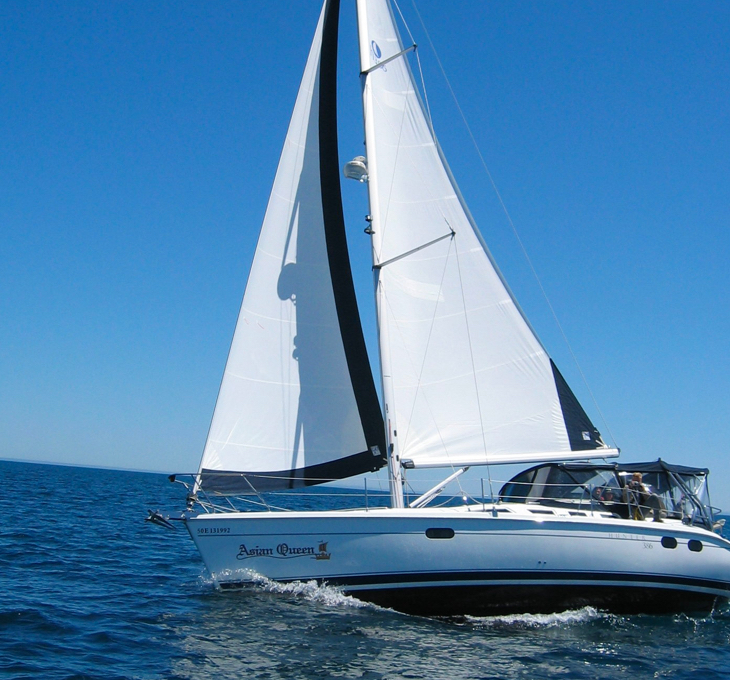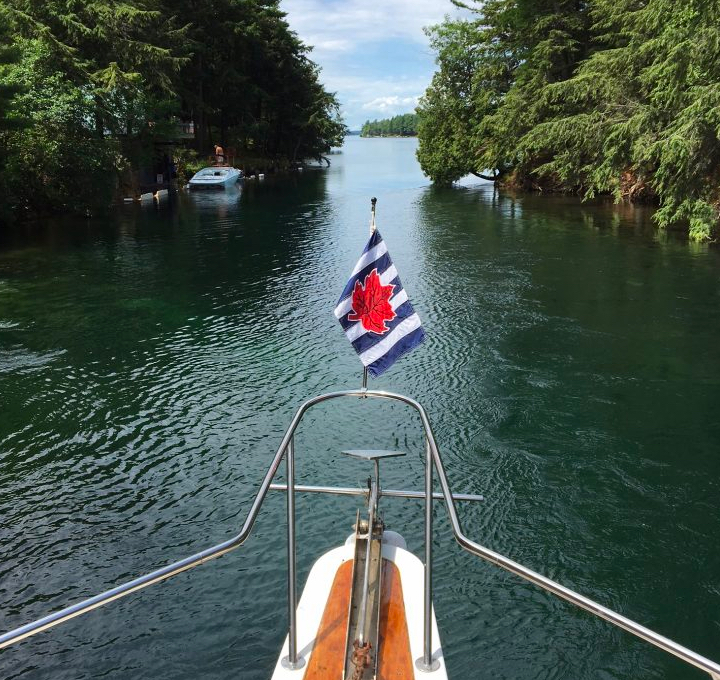Those of us with smaller boats spend almost as much time trailering as we do on the water or at a show. We prepare the boat but may not spend the time ensuring that our trailer is prepared and properly hooked to our vehicle.
Here’s a basic check list:
The trailer must be strong enough and long enough to accommodate the weight and length of vessel. Since there are various types of hull shapes, the rollers and/or bunks should be set up to provide maximum support and stability for the vessel. There should be snug, even support for the hull. This will help prevent warping and sway. Trailer lights should be working properly and you should carry spare bulbs. The license plate must be clearly visible. Car mirrors should be adjusted so you can see past the trailer.
The combined weight of your boat and its contents should not exceed 80% of the trailer’s carrying capacity. Contents should be spread evenly and properly secured, with heavier items closest to the floor. Secure the boat to the trailer with good tie downs. Attach a line from the boat’s towing eye to the trailer’s tongue or winch. Transport Canada requires tie downs and security chains from the trailer to the vehicle. Fully and securely covering the boat eliminates wind damage and flying items that might hit a following vehicle.
Trailer hitches come in a variety of shapes and sizes. Make sure you have the type that suits the towing vehicle and that the receiver bar keeps the trailer as horizontal as possible. Make sure you have the correct ball size. Never use a ball that is too small and remember to adjust the clamp that secures the trailer to the ball. Lock the clamp down after securing it to the ball. Two safety chains should be crossed under the receiver and ball from the trailer to the vehicle. This will allow the chains to support the trailer hitch if it comes off the ball.
Too much weight on the ball will cause “tail dragging” of the towing vehicle. Too little weight will cause swaying. The rule of thumb is to have 10% of the trailer’s total weight up to a maximum of 135 kgs (300 lbs) on the ball. For compact cars, the gross weight of trailer and boat should not exceed 450 kgs (1000 lbs) even if the ball and hitch have a higher capacity. For long distance towing, a transmission cooler for your automatic transmission is very inexpensive insurance against transmission overheating.
When it comes to overheating don’t forget the trailer’s wheel bearings. At the start of each season raise each wheel off the ground and give it a spin. If you hear a grinding sound it is time to change the bearing. If the wheel is loose, remove the cap and cotter pin and tighten the axle nut. Spin the wheel again. If it is still loose, remove the wheel and check for excessive wear. Replace all worn parts. Make sure the bearing is well packed with grease. Check this again half way through the season. Bearing Buddies, a bearing chamber cap replacement, are a very good idea. They allow you to fill the bearing through a grease nipple and they have a spring loaded plate that compresses the grease automatically if it leaks out of the bearing chamber. Grease not only lubricates the bearing but it keeps out water, a bearing’s worst enemy.
Before starting out, practice backing up the trailer. Remember the trailer moves in the direction opposite to the direction you turn the steering wheel. Take great care in passing other vehicles. Remember you will loose speed going up a grade. Allow extra room before you pull back in. If you brake for a prolonged period when going down hill, the braking power will fade due to heat build up. Sudden stops can cause the trailer to “jackknife” if the trailer does not have brakes or if they are poorly adjusted. If a loaded trailer weighs more than 1500 kgs (3300 lbs) it must be equipped with a trailer braking system. Check provincial regulations for details.
At the launch ramp, pull over to one side. Take off the tie downs and boat cover. Disconnect the electrical system from the vehicle and attach a long line to the boat to assist with recovery when the boat comes off the trailer. Your preparation time will allow the trailer brakes to cool down before they enter the water. Tilt the outdrive or outboard engine up. Install the drain plug. Remove any debris from the launch ramp. If you are launching a sailboat with the mast installed, check for any overhead wires. Back slowly down the ramp and if you must leave the vehicle for any reason, put the shift into park, apply the parking brakes and use wheel chocks if necessary. You don’t want the boat, trailer and car rolling in.Watch out for children. Make sure the drain plug is installed. I think I already said that.
When putting the boat back on the trailer follow the above steps in reverse. When leaving your trailer unattended it is a good idea to remove a wheel and lock it in your trunk. Add a hitch lock so the trailer cannot be easily taken away. If you have dual wheels you can chain and lock two together. If you are in a group, you can chain and lock a number of trailers together.
CanBoat Courses, Events and Resources

CanBoat Event Calendar
We offer a range of events and services nationally.
Get Your Boating License
The CanBoat Pleasure Craft Operator Card (PCOC) is good for life.





